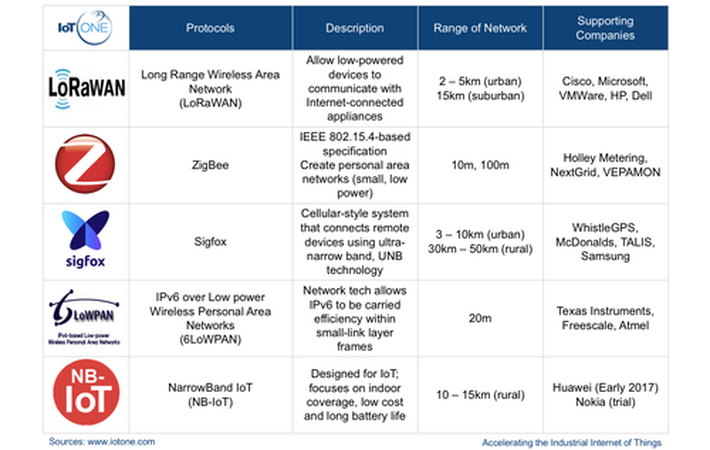
Published on 01/26/2017 | IoT Index
Following the advent of IoT, number of devices installed in workplaces and homes have increased exponentially. But following the explosive growth of devices, it is also imperative for these devices to not just collect data from their surroundings, but also to communicate with one another.
The IAB organised a workshop in San Jose, California last March on semanitc interoperability, relating to the standardising of formats and semantics of data carried out in IoT applications.
The following are notes extracted from the workshop, as written by the Chairman of the IETF, Jari Arkko:
"With the expansion of the Internet of Things (IoT), interoperability becomes more and more important. Standards-developing organizations have done a tremendous amount of work to standardize protocols to simplify implementation and to lower the cost of IoT products. As a result, new protocols were developed, existing protocols were combined in new ways, and lightweight profiles were defined.
At the application layer, interoperability is not yet mature; the work on data formats (in the form of data models and information models) has not seen the same level of consistency throughout various standardization groups. Examples of standardization efforts in this area include the work by IPSO on their Starter Pack, the Cluster Library developed by the Zigbee Alliance, the OMA LWM2M, or the UPnP Management and Control:1 specifications.
One common problem is the lack of an encoding-independent standardization of the information, the so-called information model. Another problem is the strong relationship with the underlying communication architecture, such as an RPC or a RESTful design. Furthermore, different groups develop similar concepts that only differ slightly, leading to interoperability problems. Finally, some groups favor different encodings for use with various application layer protocols."
ZigBee, like Bluetooth, has a large installed base of operation, although perhaps traditionally more in industrial settings. ZigBee PRO and ZigBee Remote Control (RF4CE), among other available ZigBee profiles, are based on the IEEE802.15.4 protocol, which is an industry-standard wireless networking technology operating at 2.4GHz targeting applications that require relatively infrequent data exchanges at low data-rates over a restricted area and within a 100m range such as in a home or building.
ZigBee/RF4CE has some significant advantages in complex systems offering low-power operation, high security, robustness and high scalability with high node counts and is well positioned to take advantage of wireless control and sensor networks in M2M and IoT applications. The latest version of ZigBee is the recently launched 3.0, which is essentially the unification of the various ZigBee wireless standards into a single standard. An example product and kit for ZigBee development are TI’s CC2538SF53RTQT ZigBee System-On-Chip IC and CC2538 ZigBee Development Kit.
• Standard: ZigBee 3.0 based on IEEE802.15.4
• Frequency: 2.4GHz
• Range: 10-100m
• Data Rates: 250kbps
A key IP (Internet Protocol)-based technology is 6LowPAN (IPv6 Low-power wireless Personal Area Network). Rather than being an IoT application protocols technology like Bluetooth or ZigBee, 6LowPAN is a network protocol that defines encapsulation and header compression mechanisms. The standard has the freedom of frequency band and physical layer and can also be used across multiple communications platforms, including Ethernet, Wi-Fi, 802.15.4 and sub-1GHz ISM. A key attribute is the IPv6 (Internet Protocol version 6) stack, which has been a very important introduction in recent years to enable the IoT. IPv6 is the successor to IPv4 and offers approximately 5 x 10^28 addresses for every person in the world, enabling any embedded object or device in the world to have its own unique IP address and connect to the Internet. Especially designed for home or building automation, for example, IPv6 provides a basic transport mechanism to produce complex control systems and to communicate with devices in a cost-effective manner via a low-power wireless network.
• Standard: RFC6282
• Frequency: (adapted and used over a variety of other networking media including Bluetooth Smart (2.4GHz) or ZigBee or low-power RF (sub-1GHz)
• Range: N/A
• Data Rates: N/A
Z-Wave is a low-power RF communications technology that is primarily designed for home automation for products such as lamp controllers and sensors among many others. Optimized for reliable and low-latency communication of small data packets with data rates up to 100kbit/s, it operates in the sub-1GHz band and is impervious to interference from WiFi and other wireless technologies in the 2.4-GHz range such as Bluetooth or ZigBee. It supports full mesh networks without the need for a coordinator node and is very scalable, enabling control of up to 232 devices. Z-Wave uses a simpler protocol than some others, which can enable faster and simpler development, but the only maker of chips is Sigma Designs compared to multiple sources for other wireless technologies such as ZigBee and others.
• Standard: Z-Wave Alliance ZAD12837 / ITU-T G.9959
• Frequency: 900MHz (ISM)
• Range: 30m
• Data Rates: 9.6/40/100kbit/s